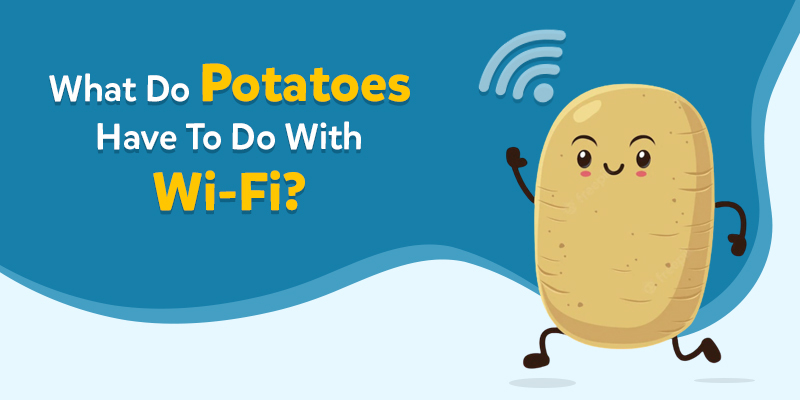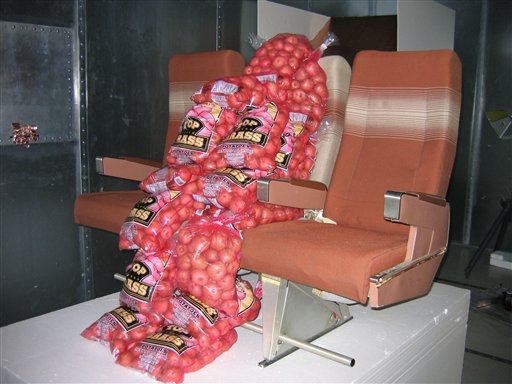
Having come this far into the 21st century, can you really imagine a world without wireless internet connections? It’s hard to remember a time when we didn’t have constant internet access.
From big to small enterprises, everyone understands the importance of Wi-Fi. Most cafes, restaurants, and airports offer free Wi-Fi. Even aeroplanes, where once you were virtually cut off from the world during your journey, have started offering in-flight Wi-Fi.
All of this sounds excellent, but what does the humble potato have to do with any of this? Let’s dive in!
Wi-Fi stands for wireless fidelity. As the name suggests, it is a type of technology that lets you connect to the internet without wires or cables. Instead, Wi-Fi is a network form that uses radio waves to send and receive signals from nearby devices to provide Internet access to the devices connected to it.
For in-flight Wi-Fi, the aeroplane receives radio signals in two waves: through air-to-ground Wi-Fi and satellite Wi-Fi. It has an antenna through which it receives the signal.
Air-to-ground Wi-Fi: When the aeroplane is within the radius of a network tower, it receives signal waves from there and then moves on to the next closest tower’s network as it completes its journey. However, this is only possible if the plane is flying close to land.
Satellite Wi-Fi: When flying over large stretches of the ocean, the aeroplane uses Wi-Fi that it receives as a signal from satellites orbiting the Earth. The antennae need constant adjustments to receive signals as both the satellite and the aeroplane are moving.
To simplify it, let’s imagine this scenario: You’re at a party and you get a call from your friend to send an important project through email immediately. You’re all set with your email, but your phone has a poor network, and there is no Wi-Fi to which you can connect. The most reasonable thing you do is ask a friend with a more efficient network provider to turn on their ‘hotspot’ and allow access to their network connection. They oblige, and you send the email successfully and all is well!
Similar to your friend’s phone, the aeroplane acts like a hotspot provider for its passenger’s devices.

Unlike Superman’s laser beams, radio waves can’t penetrate through all types of matter! Depending on the object, it might get absorbed, reflected, or refracted. As Wi-Fi signals are radio waves, they too get absorbed by certain objects, and their strength weakens. These ‘objects’ also include human beings!
An aeroplane seats an average of 200 humans seated in rows. So Boeing Co. (one of the largest aeroplane manufacturers in the world) began its experiments to ensure that every passenger receives Wi-Fi, including those sitting at the back. The engineers required ‘test subjects’ to help identify the approximate strength of Wi-Fi and possible weak spots.
But instead of getting human test subjects who would have to sit still for hours while experimental data was being generated, they found it more convenient to use sacks of potatoes.
It turns out that potatoes — because of their water content and chemistry — absorb and reflect radio wave signals much the same way as the human body does, making them suitable substitutes for airline passengers.
Video and photos of the work, which started in 2006, show a decommissioned aeroplane loaded with row upon row of potato sacks that look like large, lumpy passengers. The sacks sit eerily still in the seats as the engineers collect data on the strength of wireless signals in various spots.
In a nod to the humour in using a potato to solve a high-tech problem, researchers dubbed the project Synthetic Personnel Using Dialectic Substitution or SPUDS.
Did you enjoy reading this story? What other cool scientific experiments can you think of that use vegetables? Tell us in the comments section below.
Raza has been writing since 2008, be it fiction, poetry, or articles on science, politics, and history. He believes that words can change the world, and he uses them to inspire and empower people through his writing. When he is not working, he is watching nature documentaries or playing with his cats.
Comments
Shamanth
July 24, 2022
Good question
Harsh raj
July 17, 2022
Accha hai